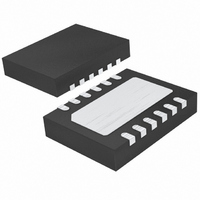LTC2923CDE#PBF Linear Technology, LTC2923CDE#PBF Datasheet - Page 16

LTC2923CDE#PBF
Manufacturer Part Number
LTC2923CDE#PBF
Description
IC POWER SUPPLY CONTROLLER 12DFN
Manufacturer
Linear Technology
Datasheet
1.LTC2923CDEPBF.pdf
(20 pages)
Specifications of LTC2923CDE#PBF
Applications
Power Supply Controller
Voltage - Supply
2.9 V ~ 5.5 V
Operating Temperature
0°C ~ 70°C
Mounting Type
Surface Mount
Package / Case
12-DFN
Lead Free Status / RoHS Status
Lead free / RoHS Compliant
Current - Supply
-
Voltage - Input
-
Lead Free Status / Rohs Status
Compliant
Available stocks
Company
Part Number
Manufacturer
Quantity
Price
APPLICATIO S I FOR ATIO
Final Sanity Checks
The collection of equations below is useful for identifying
unrealizable solutions.
As stated in step 2, the slave supply must finish ramping
before the master signal has reached its final voltage. This
can be verified by the following equation:
It is possible to choose resistor values that require the
LTC2923 to supply more current than the Electrical Char-
acteristics table guarantees. To avoid this condition, check
that I
exceed ±2mA.
To confirm that I
mum guaranteed current, verify that:
Finally, check that the RAMPBUF pin will not be forced to
sink more then 2mA when it is at 0V or be forced to source
more than 2mA when it is at V
Caution with Boost and Linear Regulators
Note that the LTC2923’s tracking cell is not able to control
the outputs of all types of power supplies. If it is necessary
to control one of these types of supplies, where the output
is not controllable through its feedback node, the series
FET can be used to control one supply’s output. For
example, boost regulators commonly contain an inductor
and diode between the input supply and the output supply
providing a DC current path when the output voltage falls
LTC2923
16
V
R
R
V
V
TRACK
R
TRACK
TA
TA
TRACKx
TRACK
TB
1
V
R
1
+
CC
TB
R
⎛
⎜
⎝
+
1
TB
does not exceed 1mA and I
< 1
+
V
1
R
TRACK
R
R
+
mA
TB
TB
TA
TRACKx
R
2
U
TA
⎞
⎟ <
⎠
2
<
V
+
CC
V
2
< 1mA, the TRACKx pin’s maxi-
CC
mA and
R
U
TB
,
where V
2
CC
<
.
2
mA
W
TRACK
RAMPBUF
=
0 8
U
.
does not
V
below the input voltage. Therefore, the LTC2923’s track-
ing cell will not effectively drive the supply’s output below
the input.
Special caution should be taken when considering the use
of linear regulators. Three-terminal linear regulators have
a reference voltage that is referred to the output supply
rather than to ground. In this case, driving current into the
regulator’s feedback node will cause its output to rise
rather than fall. Even linear regulators that have their
reference voltage referred to ground, including low drop-
out regulators (LDOs), may be problematic. Linear regu-
lators commonly contain circuitry that prevents driving
their outputs below their reference voltage. This may not
be obvious from the data sheets, so lab testing is recom-
mended whenever the LTC2923’s tracking cell is used to
control linear regulators.
Load Requirements
When the supplies are ramped down quickly, either the
load or the supply itself must be capable of sinking enough
current to support the ramp rate. For example, if there is
a large output capacitance on the supply and a weak
resistive load, supplies that do not sink current will have
their falling ramp rate limited by the RC time constant of
the load and the output capacitance. Figure 18 shows the
case when the 2.5V supply does not track the 1.8V and
3.3V supplies near ground.
Start-Up Delays
Often power supplies do not start-up immediately when
their input supplies are applied. If the LTC2923 tries to
ramp-up these power supplies as soon as the input supply
is present, the start-up of the outputs may be delayed,
defeating the tracking circuit (Figure 19). Often this delay
is intentionally configured by a soft-start capacitor. This
can be remedied either by reducing the soft-start capacitor
on the slave supply or by including a capacitor in the ON
pin’s resistive divider to delay the ramp up. See Figure 20.
2923fa













